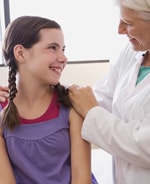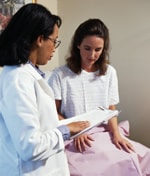1. Any woman can get BV. (BACTERIAL VAGINOSIS)
2. Most people who have chlamydia don’t know it since the disease often has no symptoms.
3. Anyone who is sexually active can get gonorrhea.
4. Viral hepatitis is the leading cause of liver cancer and the most common reason for liver transplantation.
5. Genital herpes is a common STD, and most people with genital herpes infection do not knothey
have it.
6. Having an STD can make you more likely to get HIV.
7. Human papillomavirus (HPV) is the most common sexually transmitted virus in the United States.
8. Pelvic Inflammatory Disease (PID) can lead to serious consequences including infertility.
9. The sexual behaviors that spread syphilis also spread other STDs, like HIV.
10. Trichomoniasis is a common sexually transmitted disease (STD) that is easy to cure.
11. Chancroid, scabies, and more.
Prevention
How You Can Prevent Sexually Transmitted Diseases
This page includes information about STD prevention, testing, and resources.
Get the Facts
Take Control
You have the facts; now protect yourself and your sexual partners. Effective strategies for reducing STD risk include:
Abstinence: The most reliable way to avoid infection is to not have sex (i.e., anal, vaginal or oral).
Vaccination:

Vaccines are safe, effective, and recommended ways to prevent hepatitis B and HPV
For males and females can protect against some of the most common types of HPV. It is best to get all three doses (shots) before becoming sexually active.
However, HPV vaccines are recommended for all teen girls and women
through age 26 and all teen boys and men through age 21, who did not
get all three doses of the vaccine when they were younger.
if you were not vaccinated when you were younger.
HPV Vaccines
HPV
vaccines are given as a series of three shots over 6 months to protect
against HPV infection and the health problems that HPV infection can
cause. Two vaccines (Cervarix and Gardasil) protect against cervical
cancers in women. One vaccine (Gardasil) also protects against genital
warts and cancers of the anus, vagina and vulva. Both vaccines are
available for females. Only Gardasil is available for males.
HPV
vaccines offer the best protection to girls and boys who receive all
three vaccine doses and have time to develop an immune response before
being sexually active with another person. That's why HPV vaccination is
recommended for preteen girls and boys at age 11 or 12 years.
Who else should get the HPV vaccine?
In addition to girls and
boys aged 11 or 12 years, HPV vaccines are also recommended for teen
boys and girls who did not get the vaccine when they were younger, teen
girls and young women through age 26, as well as teen boys and young men
through age 21.
The vaccine is also recommended for gay and
bisexual men (or any man who has sex with a man). It is also recommended
for men and women with compromised immune systems (including people
living with HIV/AIDS) through age 26, if they did not get fully
vaccinated when they were younger.
HPV Vaccine Safety

All
vaccines used in the United States are required to go through years of
extensive safety testing before they are licensed by the U.S. Food and
Drug Administration (FDA). Once in use, they are continually monitored
for their safety and effectiveness.
There are two human
papillomavirus (HPV) vaccines, Gardasil and Cervarix. These vaccines are
available to protect females against the two HPV types that cause most
cervical cancers. The safety of Gardasil was studied in clinical trials
with 29,000 females and males before it was licensed. The safety of
Cervarix was studied in clinical trials with more than 30,000 females
and males before it was licensed.
Both HPV vaccines are currently
being monitored for any adverse events, especially rare events not
identified in the study trials.
Mutual monogamy:
Mutual monogamy means that you agree to be sexually active with only
one person, who has agreed to be sexually active only with you. Being in
a long-term mutually monogamous relationship with an uninfected partner
is one of the most reliable ways to avoid STDs. But you must both be
certain you are not infected with STDs. It is important to have an open
and honest conversation with your partner.
Reduced number of sex partners:
Reducing your number of sex partners can decrease your risk for STDs.
It is still important that you and your partner get tested, and that
you share your test results with one another.
Condoms:
Correct and consistent use is highly effective in reducing STD transmission. Use a condom every time you have anal, vaginal, or oral sex.
Put Yourself to the Test

Knowing your STD status is a critical step to stopping STD
transmission. If you know you are infected you can take steps to protect
yourself and your partners.
Be sure to ask your healthcare provider to test you
for STDs — asking is the only way to know whether you are receiving the
right tests. And don’t forget to tell your partner to ask a healthcare
provider about STD testing as well.
Many STDs can be easily diagnosed and treated. If
either you or your partner is infected, both of you need to receive
treatment at the same time to avoid getting re-infected.
You can quickly find a place to be tested for STDs by entering your zip code in the form below.
STDs & Pregnancy
 When a woman is pregnant STDs can be more serious for her and her baby.
When a woman is pregnant STDs can be more serious for her and her baby.
- A pregnant woman with an STD can infect her baby before, during, or after the baby’s birth.
- She may also have a miscarriage, early labor, or early rupture
of the membranes surrounding the baby in the uterus leading to a
premature birth.
- Pregnant women should ask their doctors about getting tested
for STDs because some doctors do not routinely perform these tests and
many STDs have no symptoms.
STDs & Infertility
CDC Recommends Chlamydia Screening of All Sexually Active Women 25 and Under

Chlamydia and gonorrhea are important preventable causes of infertility.
Untreated, about 10-15% of women with chlamydia will develop pelvic
inflammatory disease (PID). Chlamydia can also cause fallopian tube
infection without any symptoms. PID and “silent” infection in the upper
genital tract may cause permanent damage to the fallopian tubes, uterus, and
surrounding tissues, which can lead to infertility.
- An estimated 2.8 million cases
of chlamydia and 718,000 cases of gonorrhea occur annually in the United
States.
- Most women infected with chlamydia or gonorrhea have no symptoms.
CDC recommends annual chlamydia screening for all sexually active
females 25 and under and for women older than 25 with risk factors such
as a new sex partner or multiple partners.
Expedited Partner Therapy

Expedited Partner Therapy (EPT) is the clinical practice of treating the sex
partners of patients diagnosed with chlamydia or gonorrhea by providing prescriptions
or medications to the patient to take to his/her partner without the health
care provider first examining the partner.













